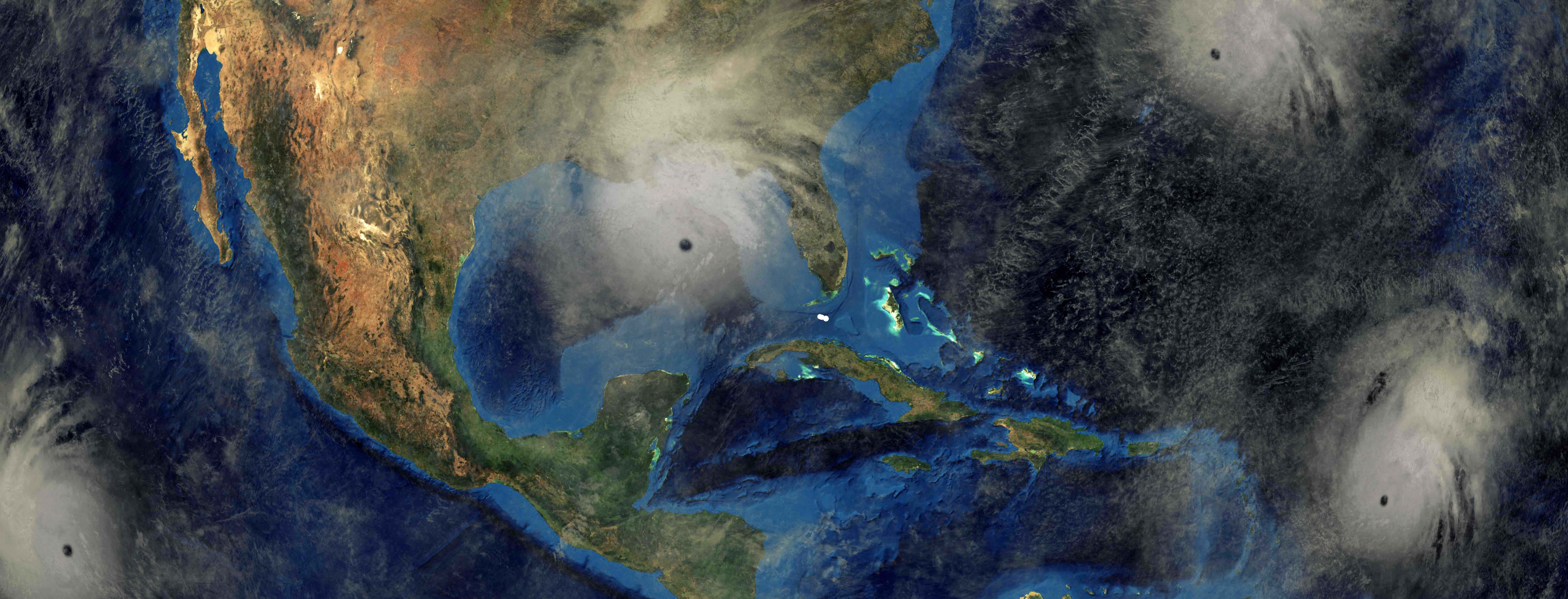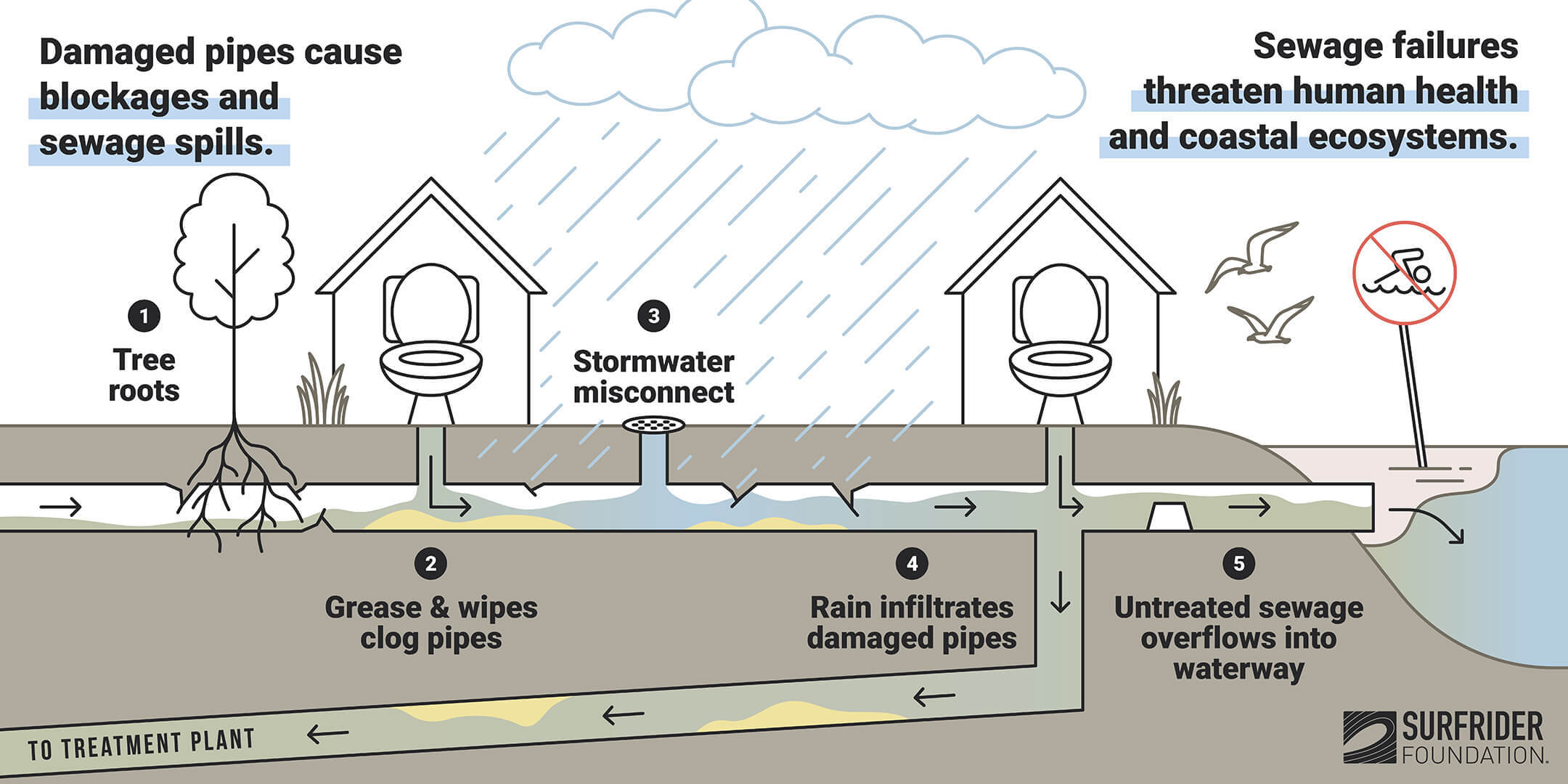
Global warming, sea level rise and shrinking beaches are all serious impacts of climate change that coastal communities are becoming more and more familiar with. People living along the coast are also already dealing with the consequences of changing weather patterns like the increased intensity and frequency of strong coastal storms, or hurricanes. What people might not be as aware of is that these changing conditions put increasing pressures on our wastewater sewage infrastructure and this will likely mean more sewage spills and failures in the future if we don’t make significant investments now to reverse course and prepare our water infrastructure to become more resilient in the face of climate change.
Years of neglect have already left America’s wastewater infrastructure in disrepair, outdated and failing. As a result, sewage spills and infrastructure failures release approximately 900 billion gallons of under-treated sewage into surface waters every year. Broken and cracked pipes, blockages, and over-loaded systems that are serving communities that have grown beyond their design capacity, result in raw sewage spilling out into our yards, streets and waterways. In cities connected to separate sewer systems, the infiltration of rain and stormwater through cracks, broken pipes or misconnects results in a greater flow of water than can be handled by the system. To avoid back-ups of sewage into people's homes or streets, the mixed flow of stormwater and wastewater is discharged by these overwhelmed systems untreated into local waterways.
How poorly maintained sewers can fail

Likewise, in areas services by combined sewer systems that purposefully collect stormwater and wastewater in the same pipes, it only takes a small amount of rain to overwhelm the sewer causing combined sewer overflows to release untreated sewage into local waterways. Extreme weather events, especially slow moving and large coastal storms, not only cause severe flooding that put public safety and property at risk, but they also completely overwhelm combined sewer systems. In these flooding events, combined sewer overflows spill untreated sewage into our rivers, bays and ocean. Likewise, in low-lying coastal areas, sea level rise can cause seawater to infiltrate into old pipes in disrepair that lie in underground. The end result is the same as during rain or storm events - overwhelmed sewers discharge untreated sewage into local waterways. This is already a problem for low-lying Miami-Dade County in Florida. Sea level rise even causes seawater to flow backwards into the storm drains, causing ‘sunny day flooding’ in the streets of South Beach.

The impacts of climate change in areas that are on individual wastewater systems like cesspools and septic systems are similar. Both systems require a certain distance of dry soil between the bottom of the cesspool or leaching field and the water table for any treatment to occur at all as the sewage effluent percolates down through the soil to join groundwater flows. When the ground surrounding a septic system or cesspool is saturated with either stormwater or rising groundwater due to flooding or sea level rise, sewage leaches directly into runoff or groundwater and finds itself in short time, contaminating surface waters and beaches.

Sewage in recreational waters is obviously a very bad idea and puts public health at risk. Sewage discharges also pollute waterways with excess nutrients like nitrogen that wreak havoc on coastal ecosystems by fueling harmful algal blooms that cause people to get sick and result in fish kills and coral reef die-offs.
Join us and ask Congress to invest in upgrading America’s failing sewage infrastructure and to protect clean water and to prepare our coasts to be resilient in the face of climate change. Send your email here.
Learn more about the growing impacts of climate change on our ocean and coasts and how you can make a difference in Surfrider's Climate Change Activist Toolkit.
This blog post is the fifth in a series that explains how the most commonly used wastewater systems fail and pollute our coastal watersheds and the ocean with sewage. View Part 1: cesspools, Part 2: Sewer Spills & Failures, Part 3: Septic Systems, Part 4: Combined Sewer Overages CSOs
